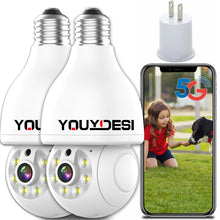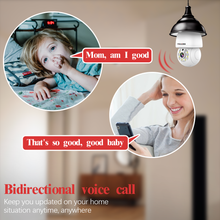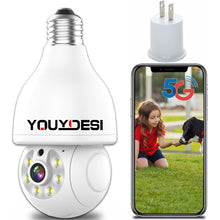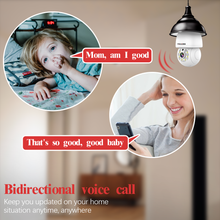For quite a while, there's been a debate about whether home security needs high-definition. In the early days when surveillance cameras first entered households, the demand for high-definition might've seemed a bit overwhelming. Back then, when only a handful of people were just starting to embrace the idea of home surveillance, the cost of surveillance systems, let alone high-definition ones, was undoubtedly daunting for many users. It was quite a stretch to think about extra features.
However, as dedicated home security devices have matured, they no longer pigeonhole surveillance as their sole function. Functions like alarms and detection have become prominent features of home security equipment. While the role of monitoring isn't unique, it underpins the foundation for accurate alerting. Consequently, high-definition capabilities are now seen as essential.
Moreover, with versatile home monitoring devices, offering features from incident detection to daily communication, the role of home monitoring has expanded beyond merely "observing criminal activity." High-definition capabilities are becoming inevitable as a result.
In recent years, the mobile industry's competition has driven mobile communication technology to new heights. Since the fall of the Nokia dynasty, no mobile brand has managed to reclaim the zenith that Nokia once enjoyed. This reflects the intense competition in today's mobile terminal market.
Therefore, whether it's smart homes, anti-theft alarms, or video surveillance, staying in sync with mobile terminals has become vital. Mobile integration is an important aspect, from the SIM card vehicle positioning mentioned earlier to telephone alerts from home security devices. Many functionalities now link to mobile phones, signifying a shift from passive anti-theft measures to more proactive ones. Mobile phones are integral to this trend.
Although the current penetration of mobile terminal alarm functions is not low, there are always various stumbling blocks when it comes to usage. There's the issue of extravagant charges, and various instability factors that can test users' patience. In my view, mobile functionality has already become the mainstream trend in home security. While these charges may feel somewhat awkward today, as home security deepens and functionalities expand, these fees may inevitably find their place.
Focus Two: Emphasizing Concealment in Home Security
In addition to performance, the design and appearance of devices are becoming increasingly critical to users. As dedicated home security devices continue to evolve, users are placing more demands on the aesthetics of these devices. Integrating devices into the home environment is a significant concern for many users.
When discussing integration into the home environment, two primary aspects stand out: device concealment and harmonization with the surroundings. As professionalism advances, the external dimensions of security devices have grown. The challenge of making these devices "blend in better" is essential to make them more effective within the confines of a home environment. The solution to concealment is crucial in ensuring these devices reach their maximum effectiveness.
Furthermore, designing for environmental coordination is equally important. Today, the homes we create are increasingly organized for harmony among all household facilities. However, for home anti-theft surveillance devices, which must both "see clearly" and "remain inconspicuous," this presents a significant challenge. In my opinion, the diversification of forms and functions in home monitoring devices, along with compact designs and shapes, will become the primary focus of the future. As we pursue personalization and explore diverse home layouts, customized devices may eventually become the central concept in home applications.
Focus Three: Valuing Durability
In our previous evaluations, situations occasionally arose where devices experienced malfunctions or control issues due to frequent use. While these instances might be described as individual cases, they also, to some extent, reflect shortcomings in the craftsmanship and quality of certain home devices.










